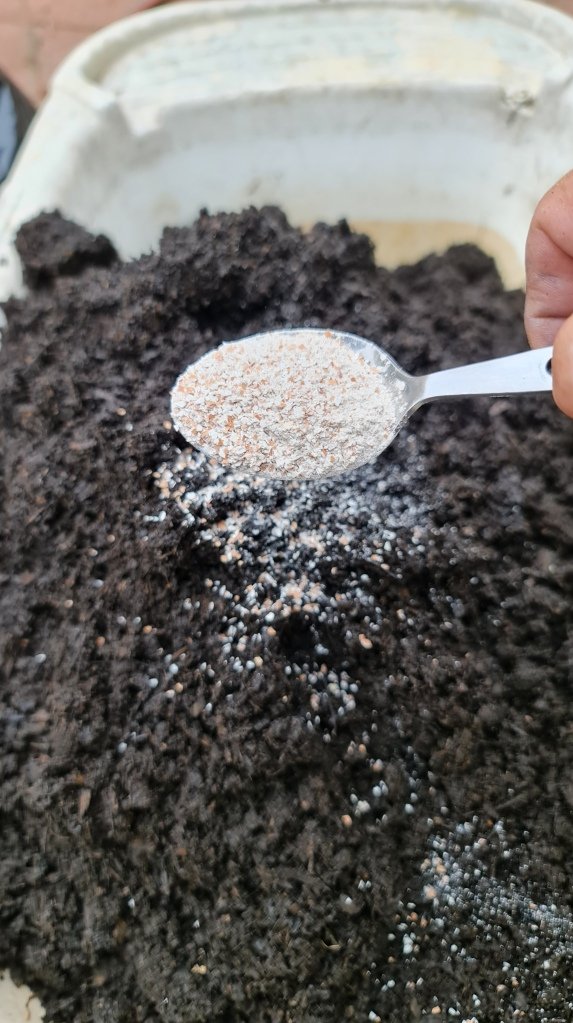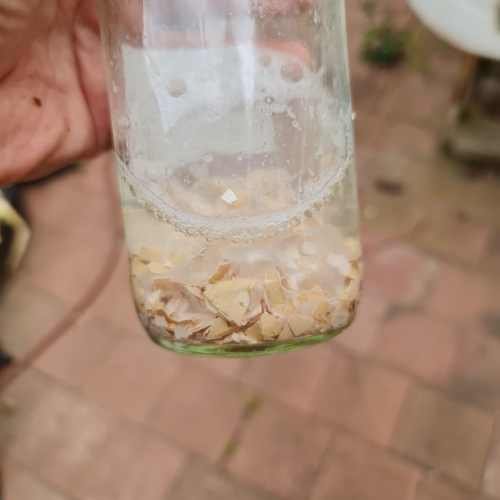
There’s a lot more to an egg shell than something that you’ve got to remove before getting to that delicious yolk inside. They’re complicated life support systems for the unborn chook and, even if unfertilized, still contain many compounds that can be good for you and your garden.
As we’re not poultry scientists, we’ll just look at the basics and see how we can use them in the garden.
What’s in eggshells?
Eggshell membrane mainly consists of protein in the form of collagen. It also contains small amounts of chondroitin sulfate, glucosamine and other nutrients. In addition to calcium (roughly 40%) and protein, eggshells also contain small amounts of other minerals, including strontium, fluoride, magnesium and selenium.
The main reason that we want to use eggshells in the garden is their calcium content because of its beneficial effects on plants. Calcium is a macronutrient that goes into making the walls of plant cells and a little more calcium will make them stronger and thicker. That means that they’ll be more resistant to attack. It is particularly useful for Tomatoes and Capsicums as its presence in the plant at appropriate levels helps prevent Blossom End Rot.
Keep the inner membrane. Only remove it if you’re going to dry and store the eggshells. It’s food for microbes who will break down the eggshell in their own way, providing the best form and method of giving the compounds to your plants.
Getting Calcium into your plants
There are three main ways to give your plants all of the calcium they need –
1. Powdering eggshells and adding them to the soil

This is the easiest way to increase calcium in your soil and potting mixes.
Simply crush the eggshells and dry them. Then put the dried shells into a blender and make a powder out of them. Then all you have to do is to sprinkle the powder and mix it in.
You don’t have too much, a teaspoonful is enough for a 20 litre pot. You just have to make sure that you mix it through your medium and that it doesn’t all end up in one place.
You’ll see folks recommending roasting the eggshells. That’s not necessary for this method but if you want to store the powdered shells or try any of the other methods listed below, it’s a good idea.
Roasting eggshells
Give the eggshells a rinse and put them into an oven at 170°C for 20 minutes. That’ll sterilise them a bit and burn off all of the organic material, leaving you with just the mineral components.
2. Water extraction
This is just like making eggshell tea! All you need to do is to boil some water and add some powdered eggshells to it. Let it boil for 30 mins or so, then let it cool overnight.
Strain off the water and repeat the process with any eggshells that are left. You can do this 2 or 3 times or until you get bored of the whole process. Any remaining shell can go into the worm farm or compost.
To use the results of the water extraction method, mix the cooled, filtered extract with rainwater at a rate of about 1 tablespoon to a 9 litre watering can (why are they all 9 litres and not 10?) of rainwater then use the mix as a root drench around your plants. The plants and soil organisms will do the rest for you.
3. Vinegar extraction
I wrote a whole post on vinegar extraction but I’ll cover it for you here as well.

Vinegar extraction takes water extraction to the next level. Add vinegar to the eggshells at a ratio of about 4:1 The ratio of vinegar to eggshells is pretty arbitrary and I’ve settled on one of 3 to 1 or 4 to 1 depending on how much vinegar I have.
Stir the mix to make sure the vinegar reaches all of the eggshells and leave for a week, stirring occasionally until any bubbling stops. Leave the lid off of the container that the reaction is happening to let the gas from the bubbles (carbon dioxide) escape in or you could end up with a mess when you open it.
After a few days to a week, strain out the eggshells and bottle and store the solution. You can leave it for longer to more fully extract the mineral content of the shells but I’ve found that at this stage, its more effective to strain and add fresh vinegar to the leftover eggshells. It’ll bubble a bit and you can repeat the process. Add any subsequent vinegar extract to the original batch.
You don’t need to use much of the vinegar extract. I use 1 tablespoon in a 9 litre watering can of water or 1 teaspoonful in my 2 litre sprayer for a foliar spray. Some sources, say that you can use less than this but I’ve found that these are pretty good amounts.
Other uses of eggshells
Chicken booster – powdered or at least finely crushed eggshells can be added to your chicken’s food to replace many of the nutrients that went into making them. Another option is to add water or vinegar extract to their drinking water, especially if the vinegar used to make the extract is Apple Cider Vinegar which has other health benefits for your flock.
Soil sweetener – the calcium in the eggshells or either of the extracts helps to combat soil acidity by raising the pH. We say that it ‘sweetens’ the soil. Just sprinkle the powdered shells onto the soil or use water extracted calcium as noted above. Leave it two days before testing your pH again.
Slug deterrent – Using crushed eggshells is a traditional way of creating a barrier against Slugs and Snails. The sharp, jagged edges of the shell pieces deter the critters who don’t enjoy dragging their soft bodies over them. You don’t need to powder the eggshells for this, just dry them and crush them up by hand.

Using eggshells for yourself –
Eggshells have people uses too. You can drink the water or vinegar extractions, diluted to taste and they’ll add nutrients to your diet that are great for your bones, teeth, skin and brains.
Another option is to add powdered eggshells as the rough component in home made hand or face scrubs.
A teaspoonful of powdered eggshells (mixed with a little water so that you can swallow it) makes for a reasonable antacid for when you’ve overdone things at the dinner table.








